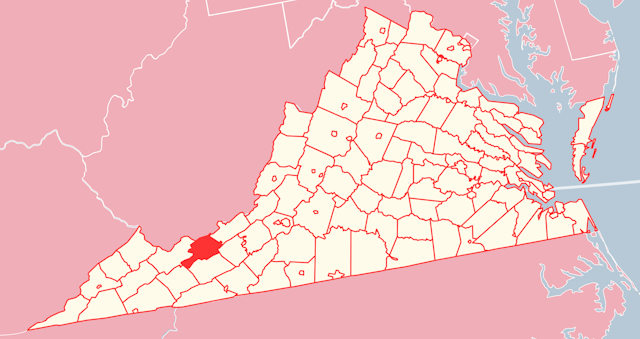Rehabs in Bland
Bland County is located in the southeastern part of Virginia. It is a part of Appalachia. Bland is the seat. It was created in 1861 and named after Richard Bland.
According to 2020 statistics, it had about 6,200 residents. It makes it the 4th least populated county.
Substance abuse is not very common here, however, addiction affects many people.
Substance Abuse Statistics in Bland County
According to the Virginia Department of Health, in 2020, an average of 4 Virginians died because of opioid overdose. There were about 9,100 visits to an emergency room in 2020. It was an increase of 33%.
Moreover, the number of overdoses increased by 17% between 2019-2020. As of July 2021, people over 21 can purchase, consume and grow marijuana. However, they can do it with some limitations.
The substance abuse rates are not higher, however, addiction is still present. For that purpose, there are many rehabs near Bland County to help to recover from addictions.
Alcohol and Drug Evaluation
The evaluation typically involves substance usage and a review of its history. They might inquire about their family history, state of mind, and other aspects that might be related to substance usage.
The evaluation's goal is to establish whether the patient has a dependency. The clinician will determine whether the patient has a drug or alcohol issue after gathering all the necessary data. If so, the therapist will create a treatment strategy to assist the patient in overcoming their addiction.
Types of Rehabs in Bland County
Outpatient therapy: Patients receive essence use care from specialists in a clinic or institution while still living at home.
Inpatient treatment: Patients get strict and highly controlled therapy while they are hospitalized, typically for at least 28 days.
Residential therapy: In a facility other than a hospital, clients receive strict, highly structured care.
Recovery housing: Patients may take part in therapy sessions while they reside in monitored, temporary housing.
Rehab Centers Near Early County
Dominion Hospital
The center specializes in trauma, eating disorders, school issues, and PTSD. They solve issues such as ADHD, coping skills, dual diagnosis, medical detox, grief, and so on. It includes mental health problems such as DID, psychosis, impulse control, etc.
Moreover, the sexuality target is bisexual, lesbian, and LGBTQ+. The age target is elders, teens, adults, and children.
The treatment programs are detox, dual diagnosis, and eating disorders. Cure approaches are art therapy, expressive arts, family systems, gestalt, humanistic, etc.
Piedmont Behavioral Services
The specialties are habits, anxiety, and depression. The issues they solve are anger management, BPD, ODD, OCD, suicidal ideation, and so on.
The client focus is Black and African American and Hispanic and Latino. The sexuality targets are lesbians, bisexuals, and LGBTQ+.
The restorative types are ACT, CBT, DBT, and MBCT. The age target is adults, teens, children, and preteens. Further, they offer intensive outpatient and inpatient treatment.
Luxury Rehab Costs
Luxury rehabs are private clinics that offer treatment for different habits and issues. They are frequently portrayed as the healing havens of the wealthy and well-known. These facilities are typically found in stunning, upscale regions.
The prices might be much more expensive than affordable ones. For example, a 30-day stay in a luxury rehab facility can cost from $30,000 to $100,000. It is much higher compared to $5,000 to $20,000 at a standard facility.
Rehabs With No Insurance
The state offers free rehab for the ones who cannot afford to attend rehabilitation. Here are the free centers:
Life Center of Galax
Clinch Valley Comprehensive Treatment
New Life Recovery Center
Mercer County Fellowship
Forcing Your Teenager Into Rehabilitation
Parents should explain the changes that they see in a teen's conduct in a written voice and demeanor. It is better to give them a chance to talk to measure their willingness to start the recovery process. Additionally, parents should make it clear that abusing alcohol or drugs will have negative effects.

